The 1990 Draft is one of the least revisited in NBA history. It was relatively weak in terms of impact players, but full of interesting case studies.
It produced one Hall of Famer (Gary Payton), a 3-time champ (Toni Kukoc), a hugely talented disappointment (Derrick Coleman), a 48th pick who made the All-Star team (Cedric Ceballos), a professional boxer (Kendall Gill), and a Tourette’s syndrome sufferer who refused to stand for the Star-Spangled Banner (Mahmoud Abdul-Rauf).
Here are the top 10 picks and their profiles, re-ordered with the benefit of hindsight:
1) Gary Payton (picked No. 2 by Seattle)
1,335 games, 35.3 minutes, 16.3 points, 6.7 assists, 3.9 rebounds, 1.8 steals, 46.6% FGs, 18.9 PER.
Best season: 1999/00 – 82 games, 24.2 points, 8.9 assists, 6.5 rebounds, 1.9 assists, 44.8% FGs, 23.6 PER, 45-37 record, All-NBA 1st team, All-Defense 1st team.
Most memorable moment: Guarding MJ – with some success – during the ’96 Finals.
A brash trash talker, great floor general and excellent defender, Payton was the face of the Sonics in the 90s, leading them to three 60-win seasons and a Finals appearance. By his fifth season, he was one of only two players in the league averaging 20 points and 7 assists (Penny Hardaway was the other). An extremely durable player, Payton missed only 5 games during his first 12 years in the league. Over his 7-year prime (’95 to ’02), he averaged 22, 8 and 5. A 9-time All-Star, he ranks fourth all-time in steals, 8th in assists, and 9th in games played.
Payton made the All-Defensive first team 9 straight times and was Defensive Player of the Year in ‘95/96 – the rarest of achievements for a point guard. Offensively, he was a demon in the post, a good finisher around the rim and an expert lob passer (to Shawn Kemp). He did not have the pure point guard and leadership skills of John Stockton or Jason Kidd, or the shooting ability of Steve Nash, but goes down as a top 10 PG and top 50 player of all time. He is also one of many NBA greats with questionable knowledge of other NBA greats.
2) Derrick Coleman (picked No. 1 by New Jersey)
781 games, 33.2 minutes, 16.5 points, 9.3 rebounds, 2.5 assists, 1.3 blocks, 44.7% FGs, 18.0 PER.
Best season: 1993/94 – 77 games, 20.2 points, 11.3 rebounds, 1.8 blocks, 44.7% FGs, 21.4 PER, 45-37 record.
Most memorable moment: Posterizing and taunting a rookie Shaq.
Where did it all go wrong? Coleman was the Rookie of the Year with averages of 18 and 10 his first season, was an All-NBA third teamer his third season, and was an All-Star by his fourth season. Over his first five years in the league, he put up 19.9 points, 10.6 rebounds and 1.6 blocks on 46% shooting. A powerful 6’10” athlete with a soft shooting touch, there was very little DC could not do on the basketball court.
Sadly, he lacked the attitude and work ethic to match his all-world ability; that “Coleman Attends a Shootaround” was a headline in the New York Times in 1995 tells the story here. He was traded to the Sixers for Shawn Bradley later that year, spent most of the rest of his career overweight and would never again sniff an All-Star appearance – though still put up 15 and 9 as a 34-year old.
When Bill Simmons was asked which player was the biggest waste of talent in the history of sports, he responded: “No question: Derrick Coleman. He could have been the best power forward of all-time, and he just didn’t give a crap.”
3) Toni Kukoc (picked No. 29 by Chicago)
846 games, 26.3 minutes, 11.6 points, 4.2 rebounds, 3.7 assists, 1.0 steals, 44.7% FGs, 17.3 PER.
Best season: 1994/95 – 81 games, 15.7 points, 5.4 rebounds, 4.6 assists, 1.3 steals, 50.4% FGs, 19.8 PER, 47-25 record.
Most memorable moment: Game winner against the Knicks in the ’94 Conference Semifinals.
Kukoc was already 25 by the time he made it to the NBA but still finished 6th in games played, 5th in scoring and third in assists amongst his draft class. A versatile 6’10” small forward who could handle the ball and shoot the three, he was the Sixth Man of the Year in ‘95/96, a key piece of Chicago’s second three-peat, and a triple-double threat throughout his career.
Though a poor defender and sometimes tentative on offense, he was a top teammate who tended to make others around him better with his unselfish play. His silky smooth passes made for great highlights, and only two 6’9”-or-taller forwards ever assisted on 23% or more of their team’s baskets: Larry Bird and Kukoc. He also had a knack for coming up big in the clutch, hitting a game-winner in just his fourth game as a Bull and numerous other huge shots (such as this, this and this).
In his one season as the first option he led the (admittedly terrible) ’99 Bulls in scoring, rebounds and assists. A steal at No. 29, he ultimately proved to be worthy of GM Jerry Krause’s years-long obsession.
4) Kendall Gill (picked No. 5 by Charlotte)
966 games, 30.5 minutes, 13.4 points, 4.1 rebounds, 3.0 assists, 1.6 steals, 43.4% FGs, 14.7 PER.
Best season: 1996/97 – 82 games, 21.8 points, 6.1 rebounds, 4.0 assists, 1.9 steals, 44.3% FGs, 19.6 PER, 26-56 record.
Most memorable moment: 41-point, 9-assist game versus Orlando in ‘97.
The only ’90 draftee besides Payton to play over 28,000 minutes, Gill was a fitness freak and great athlete who played both ends of the floor. He once led the league in steals and twice averaged 20 for a season, though he was best qualified to be a third option on a good team – as he was for the ’93 Hornets, the only team he played on that made it out of the first round.
Gill took up professional boxing upon retiring from the NBA, but may have taken his passion a little too far whilst working as a Bulls TV analyst last season, when he punched co-host Tim Doyle after a game.
5) Cedric Ceballos (picked No. 48 by Phoenix)
609 games, 14.3 points, 24.2 minutes, 5.3 rebounds, 1.2 assists, 50.0% FGs, 30.9% 3-Pt FGs, 19.3 PER.
Best season:1994/95 – 58 games, 21.7 points, 8.0 rebounds, 1.8 assists, 50.9% FGs, 39.7% 3-Pt FGs, 19.9 PER, 48-34 record.
Most memorable moment: Winning the 1992 dunk contest blindfolded.
Without question the steal of the draft, Ceballos in his prime routinely managed to score 20 without having a single play run for him. He was an expert cutter and rebounder who excelled at scoring garbage buckets and was a central figure on the surprisingly good ’95 Lakers following his trade from Phoenix. As Chick Hearn marvelled during his play-by-play, “playing without the ball Ceballos has no peer!”
Being an unreliable shooter and undisciplined defender prevented Ceballos from having any lasting postseason impact (and from making the top 4 of this retro re-draft). Lakers historian and YouTube legend nonplayerzealot4 (who uploaded Cedric’s 50-point game here versus Minny here) cogently recalls: “He was a clear liability on defense and his regular season production didn’t translate to the playoffs because his one-dimensional game was easy for opponents to negate.”
Ceballos also literally went missing in the middle of the season and played 70-plus games only twice due to various injuries and suspensions, and was ultimately traded four times in four years towards the end of career. Insanely good value for the 48th pick nonetheless.
6) Elden Campbell (picked No. 27 by the Lakers)
1,044 games, 24.7 minutes, 10.3 points, 5.9 rebounds, 1.5 blocks, 46.0% FGs, 69.9% FTs, 15.9 PER.
Best season: 1996/97 – 77 games, 14.9 points, 8.0 rebounds, 1.5 blocks, 46.9% FGs, 16.8 PER, 56-26 record.
Most memorable moment: 40-point, 10-rebound game against Patrick Ewing.
Campbell was a full-time starter on the Lakers by his fourth season. A talented back-to-the basket scorer with good hands and ambidextrous finishing ability at the rim, he was also fourth in the league in blocks in ‘96 (even Hakeem Olajuwon’s baseline turnaround was not safe). Yet he was frustratingly inconsistent. Even at Clemson he had a reputation for disappearing acts and questionable desire – hence him falling to 27th in the draft.
A big man who could lead a team for stretches as the featured post-up option, he also went missing for others. The same Elden who averaged 26 and 10 over a 9-game stretch without Shaq in February ’97 averaged just 8 and 5 as the Lakers lost 4-1 to the Jazz in that year’s playoffs.
Ultimately, following a four-year spell averaging 13 and 7 as the Hornets’ starting center he won a title as a bit-part backup for the Pistons and played enough games (second highest) to be first in blocked shots, fourth in total points and fourth in total rebounds amongst his draft class. The inconsistency prevents him going higher here, but he was excellent value at No. 27.
7) Chris Jackson / Mahmoud Abdul-Rauf (picked No. 3 by Denver)
586 games, 26.7 minutes, 14.6 points, 3.5 assists, 1.9 rebounds, 44.2% FGs, 90.5% FTs, 15.4 PER.
Best season: 1993/94 – 81 games, 18.0 points, 4.5 assists, 2.1 rebounds, 46.0% FGs, 95.6% FTs, 16.7 PER, 42-40 record.
Most memorable moment: 50-foot game winner against the Clippers.
A barely-6’0”, 160-pound shoot-first point guard with a quick release and quicker crossover, Jackson, who changed his name to Mahmoud Abdul-Rauf after converting to Islam, is perhaps the most interesting story of any of the ’90 draftees. A sufferer of Tourette’s syndrome, he was known as much for his uncontrollable tics and convulsions as for his off-the-dribble scoring prowess. A fan attending one of his games once cruelly shouted, “Mahmoud, head fakes don’t work when you’re playing defense!”
By ‘92/93 though he was leading the Nuggets in scoring and would do so for four straight years. He was averaging 19 points and 7 assists and leading the league in free throw shooting in March 1996 when he decided not to stand for the US national anthem on (shaky) religious grounds, drawing an indefinite league suspension and skepticism from Hakeem, a fellow Muslim. Though Abdul-Rauf would play again (agreeing to stand during the anthem whilst praying to Allah), his career took a nosedive and by age 29 he was playing in Turkey. By 2001 he was busy spouting 9/11 conspiracy theories and simultaneously wondering why he had been black-listed by NBA teams.
Though he has the third highest scoring average of his class, 586 career games is no level of return for a top 3 pick. He goes 7th here, and would go much lower in a stronger draft.
8) Dennis Scott (picked No. 4 by Orlando)
629 games, 28.6 minutes, 12.9 points, 2.8 rebounds, 2.1 assists, 41.7% FGs, 39.7% 3-Pt FGs, 13.4 PER.
Best season: 1995/96 – 82 games, 17.5 points, 3.8 rebounds, 44.0% FGs, 42.5% 3-Pt FGs, 16.1 PER, 60-22 record.
Most memorable moment: NBA-record 11 3-pointers versus Atlanta.
Sharp shooting Scott appeared to be very good value at No. 4 early in his career. He was an All-Rookie first teamer, averaging 16 points in ‘90/91. He thrived alongside Shaq in the mid-90s, hitting 43% from deep two years in a row and he was the Magic’s third leading scorer during their run to the ’95 Finals.
It was all downhill for Scott after Shaq left for L.A. though. By 1997 he was going bat-shit mental at his own summer camp, blasting obscenity-laden rap music from his car, yelling “I ain’t scared!” and driving off as shocked children looked on. He played for six teams over the final four years of his career with little success.
9) Tyrone Hill (picked No. 11 by Golden State)
801 games, 28.0 minutes, 9.4 points, 8.6 rebounds, 0.5 blocks, 50.2% FGs, 64.3% FTs, 14.0 PER.
Best season: 1994/95 – 70 games, 13.8 points, 10.9 rebounds, 0.6 blocks, 50.4% FGs, 16.8 PER, 43-39 record.
Most memorable moment: Getting dunked on by Kobe Bryant.
Hill’s game was based almost entirely on hustle and hard work. A good-but-not-great athlete who excelled at cleaning up others’ mess around the rim, he is 13th all-time in offensive rebound percentage at 12.5% and amassed 211 double-doubles over his career.
Following his trade to Cleveland in ‘93, he blossomed into one of the better garbage men in the league and was rewarded with an All-Star berth in ’95. A solid post defender, he was also a starter (and ideal unsung Iverson teammate) on the Sixers team that made the Finals in ’01.
He also happens to be listed by Complex as the 9th ugliest athlete of all-time.
10) Antonio Davis (picked No. 45 by Indiana)
903 games, 28.9 minutes, 10.0 points, 7.5 rebounds, 1.0 blocks, 44.8% FGs, 72.7% FTs, 14.1 PER.
Best season: 2000/01 – 78 games, 13.7 points, 10.1 rebounds, 1.9 blocks, 43.3% FGs, 16.5 PER, 47-35 record.
Most memorable moment: Running into the stands to confront a fan.
A durable no-nonsense power forward with decent touch on his mid-range jumper, Davis played three years in Europe before eventually becoming the Pacers’ first big man off the bench in the mid-90s. He finally became a starter at age 31, putting up 13 and 9 over four seasons in Toronto, where he earned an All-Star berth in 2001 as an injury replacement.
Honourable mentions: Jayson Williams (picked No. 21 by Phoenix), Lionel Simmons (picked No. 7 by Sacramento), Dee Brown (picked No. 19 by Boston).
Biggest bust: Bo Kimble (picked No. 8 by the Clippers) – played only 105 NBA games and averaged 5.5 points on 38% shooting.

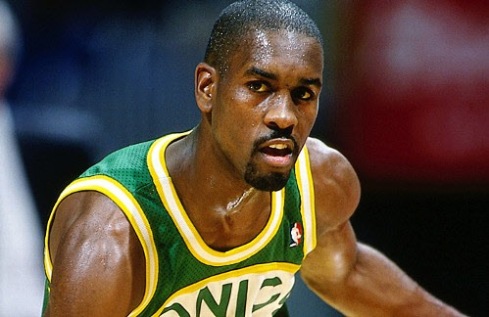


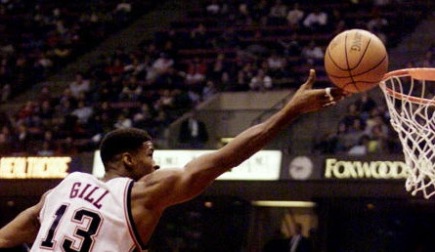



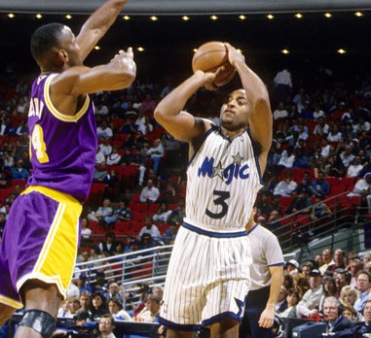
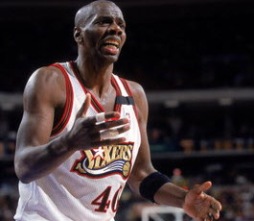
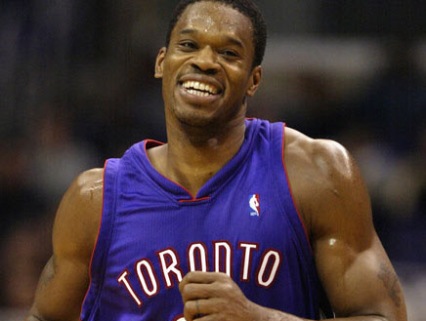
Brilliant read! Educating me very well. 🙂
Thanks love. 😉
Pingback: In appreciation of Boris Diaw, difference maker and historically good role player | NBA Observer
Pingback: 1990 NBA Draft revisited: Shaq, Zo, Spree & Co. | NBA Observer